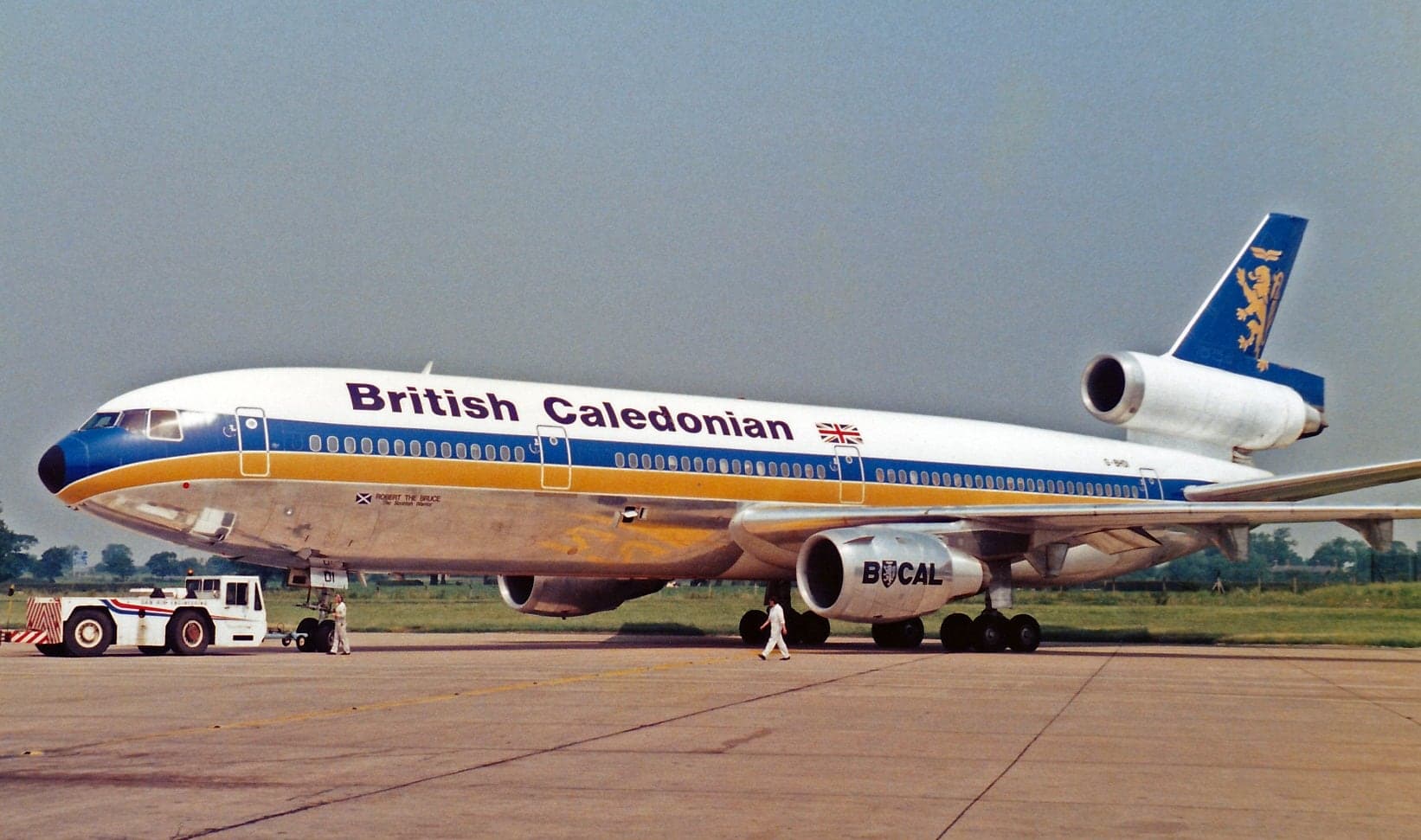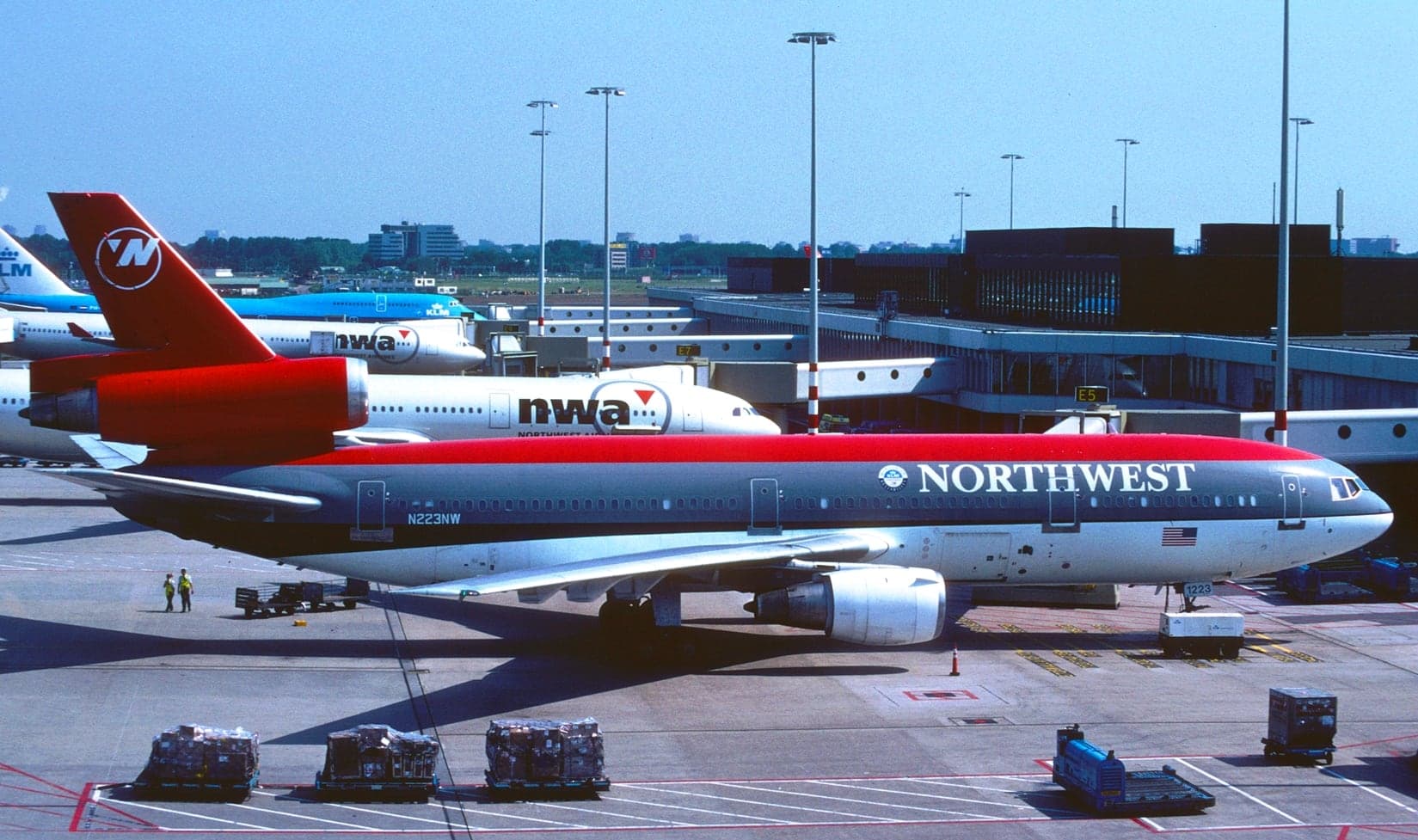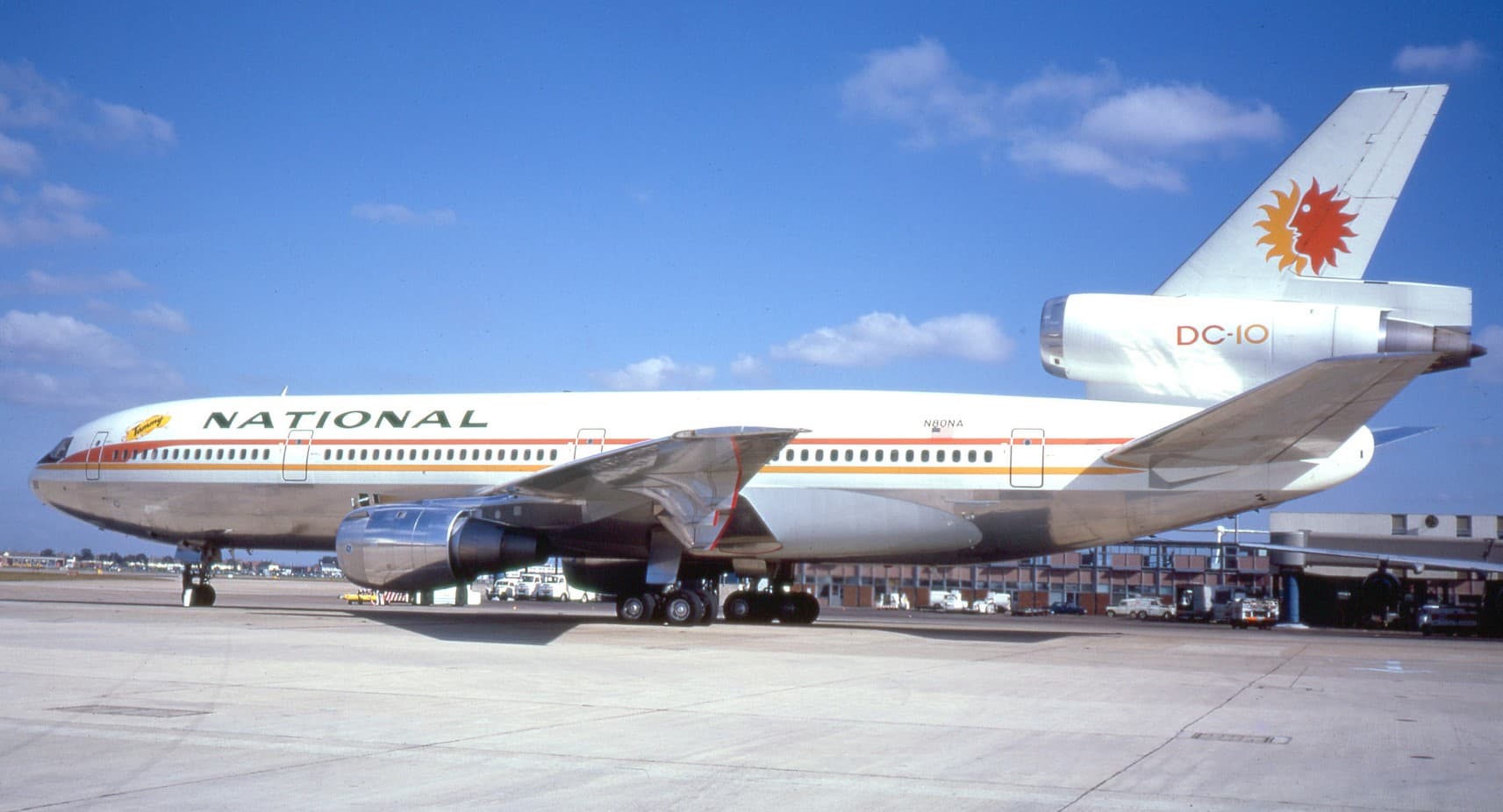Development of the Breed
DC-10s were built in three series. The DC-10-10/10CF (convertible freighter) series were shorter-range jetliners with two-class cabin layouts and 2700 miles loaded range. The DC-10-15 was equipped with uprated CF6 engines intended for operation from higher altitudes and 4,000 miles loaded range. The DC-10-20 was powered by Pratt & Whitney JT9D turbofan engines.
The DC-10-30/30CF/30ER (extended range)/AF (all freighter) and 10-40 series were slightly stretched and equipped with an additional centerline main landing gear. Range in the -30 and -40 was closer to 6,000 miles, making them capable of flying international routes.
Another DC-10 variant, the 10-50, was configured with Rolls-Royce RB211-524 engines for British Airways with additional range beyond the -30 and -40, but the -50 was not built. The US Air Force bought 60 KC-10A Extender aerial refueling tankers based on the DC-10-30.

Replaced by a Cousin
The DC-10 was eventually largely replaced by the MD-10 and MD-11. The MD-10 is an upgraded DC-10 with electronic flight instrumentation screens (EFIS) from the MD-11 in the cockpit and other upgrades.
The MD-11 is a stretched 10 with some improvements, including winglets and uprated CF6 engines. DC-10 commercial passenger operations came to an end on 20 February 2014. The 446th and final 10 rolled off the Long Beach production line in December 1988 and was delivered to Nigeria Airways in July of 1989.
As the final DC-10s were rolling off the production line, tooling was being set up to build MD-11s. More than 160 airlines operated the 10 series. DC-10 freighters in the US took their last flights in late 2022 – many of them with Federal Express or FedEx. DC-10s are also being used as aerial firefighting tankers and the Orbis International Flying Eye Hospital.

Some Interesting Facts:
FedEx became the first U.S. carrier to equip its aircraft with an anti-missile defense system in 2006. The gray oval Northrop Grumman Guardian pod can be seen on the bellies of FedEx MD-10s located between and just aft of the main landing gear.
The DC-10-40 was equipped with Pratt & Whitney JT9D engines- the same as those powering the Boeing 747. Northwest Orient Airlines wanted the DC-10-20 to be renamed DC-10-40 and powered by JT9Ds for fleet engine commonality. The improved jetliner was distinguishable from the CF6-powered DC-10s by the slightly larger intake one the number two (tail-mounted) engine.

Other facts to help you win at AvGeek Trivia Night
The Royal Netherlands Air Force (Koninklijke Luchtmacht or KLu) flew a pair of KDC-10 aerial refueling tankers based on the DC-10-30CF. They are now operated by Omega as commercial air refuelers.

One former American Airlines DC-10-10 was operated by the Missile Defense Agency as the Widebody Airborne Sensor Platform (WASP).
The unflattering nicknames Death Contraption 10, Death Cruiser 10, Daily Crash 10, Donald’s Disaster, and Crowd Killer were all bestowed upon the tri-holer after its first few years of service and its unfortunate safety record at the time.

The engines were numbered one (port wing), two (tail-mounted), and three (starboard wing).
The first major accident for the 10 occurred when the cargo door blew off an American Airlines jet just after departing Detroit. The sudden loss of cabin pressure caused part of the cabin floor to collapse, which knocked out several of the flight control mechanisms. The pilots were able to return to the airport with no loss of life aboard the aircraft.

Even more Facts!
DC-10s were involved in 32 hull-loss incidents, and 1,439 deaths resulted from these incidents. Compare that with the Airbus A300, a much newer aircraft, which was involved in 31 hull-loss incidents and lost 1,436 lives as a result.
On 7 April 1994, FedEx employee Auburn Calloway attempted to hijack FedEx flight 705. Calloway was deadheading on the flight and armed with hammers and a speargun he had smuggled aboard the jet in a guitar case. He pleaded temporary insanity at his trial.

On 19 September 1989, a DC-10 operated by French carrier UTA was destroyed by a bomb hidden in luggage by Libyan terrorists over the Sahara desert. All 170 souls on board were killed.

[…] resolved safety issues and improved maintenance standards, the DC-10 in the end enjoyed an entirely acceptable safety record and decades of service under different airlines all around the […]
As in remember the worst disaster involving a DC10 was the Turkish Airlines crash occurring after takeoff from Paris’s CDG airport – again resulting from a design flaw in the cargo door latching mechanism..